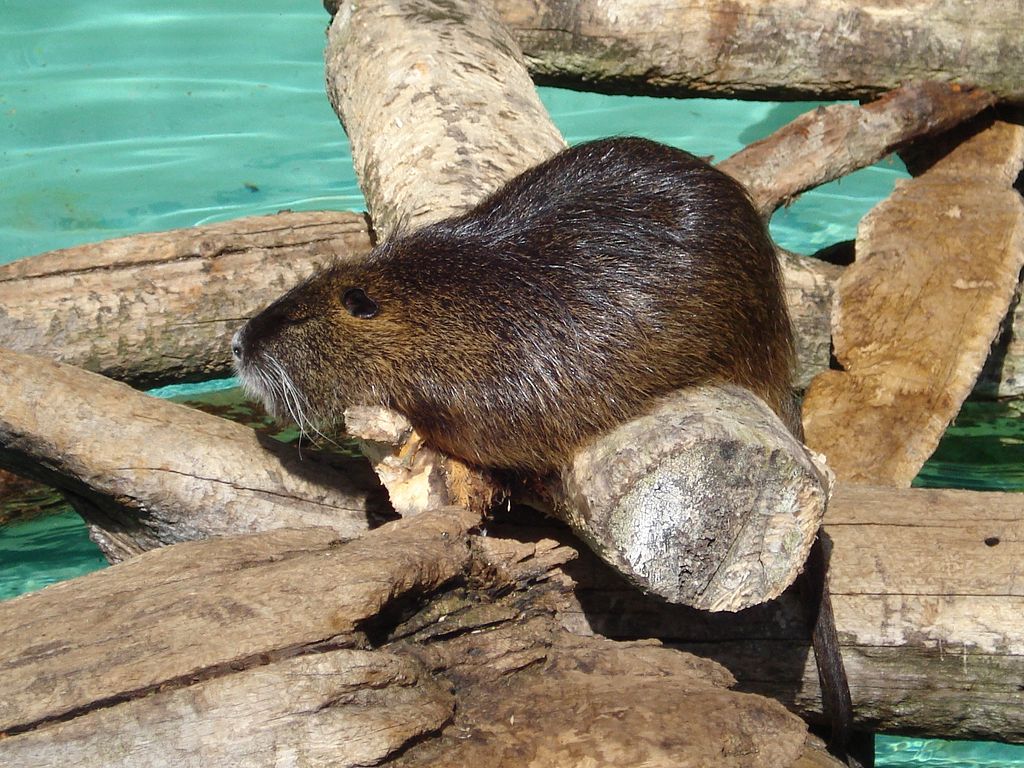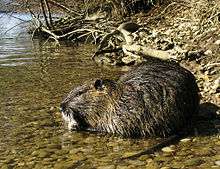Coypu: Difference between revisions
No edit summary |
No edit summary |
||
| (5 intermediate revisions by 3 users not shown) | |||
| Line 1: | Line 1: | ||
{{FriendBox | {{FriendBox | ||
|name=Coypu | |name=Coypu | ||
|originalpic=CoypuOriginal. | |originalpic=CoypuOriginal.png | ||
|aka=Nutria | |aka=Nutria | ||
|name_jp=ヌートリア | |name_jp=ヌートリア | ||
| Line 9: | Line 9: | ||
|distribution=South America | |distribution=South America | ||
|diet=Omnivore | |diet=Omnivore | ||
|lifespan= | |lifespan=6 years | ||
|wikilink=[[wikipedia:Coypu|Coypu]] | |wikilink=[[wikipedia:Coypu|Coypu]] | ||
|conservationstatus={{LC}} | |conservationstatus={{LC}} | ||
| Line 15: | Line 15: | ||
{{FriendBuilder | {{FriendBuilder | ||
|introduction='''Coypu''' is a Rodent [[Friend]] that appeared in the original Kemono Friends mobile game. | |introduction='''Coypu''' is a Rodent [[Friend]] that appeared in the original Kemono Friends mobile game. | ||
|appearance=Coypu has short messy hair that reaches at least the shoulder blades with part of it cut to about cheeks-length and a fringe that reaches the eyebrows. Her black eyes are emotionless, as if she was blase. She wears a white shirt inside of a beige sleeveless blouse | |appearance=Coypu has short messy hair that reaches at least the shoulder blades with part of it cut to about cheeks-length and a fringe that reaches the eyebrows. Her black eyes are emotionless, as if she was blase. She wears a white shirt inside of a beige sleeveless blouse torn off around edges and accompanied by a ribbon attached at shirt's collar. She carries a brown shorts and as the blouse, the edges are torn off. Her arms and legs are covered by full-length black gloves and tights. She bears black loafers. Finally, she holds the tail and ears of the animal she's based on. | ||
|minor==== [[Kemono Friends Picross]] === | |||
Coypu appears in a puzzle of Kemono Friends Picross where the player can obtain a picture of the friend by solving a puzzle. | |||
|reallife=[[File:Coypu_Real.jpg|thumb|upright=1.0|left| Coypu (Myocastor coypus)]] | |reallife=[[File:Coypu_Real.jpg|thumb|upright=1.0|left| Coypu (Myocastor coypus)]] | ||
( | The coypu also known as Nutria is a large, herbivorous, semiaquatic rodent. The coypu somewhat resembles a very large rat, or a beaver with a small tail. Superficially the Coypu and the Brown Rat are rather similar in appearance, hardly surprising as they are both rodents. But the blunt square shape of the coypu's muzzle and it's webbed feet clearly distinguish it, not to mention it's size. | ||
Nutrias inhabit marshes, lake edges, and sluggish streams, especially in areas with emergent or succulent vegetation along the banks. They are chiefly lowland animals, but may range up to 1,190 meters in the Andes. Although they generally prefer fresh water, the population of the Chonos Archipelago in Chile occurs in brackish and salt water. | |||
Nutria are herbivorous. The diet consists largely of aquatic vegetation: stems, leaves, roots, and even bark. They may use logs or other floating objects as feeding platforms. They consume up to 25% of their body weight a day, a formidable quantity when combined with the 80 to 90% of the plant material wasted while feeding on the stems. Aquatic vegetation is often completely removed from a locality with the roots and rhizomes dug out for consumption. | |||
Nutria is nocturnal animal. It is mostly active around midnight. Myocastor coypus is semiaquatic. Individuals can remain submerged for more than 10 minutes. Nutria is excellent swimmer that can spend 5 minutes under water without returning to the surface to breathe. Most of the active period is spent feeding, grooming, and swimming. They commonly make platforms of vegetation, where they feed and groom themselves. For shelter nutria construct burrows, which may be a simple tunnel or a complex system containing passages that extend 15 meters or more and chambers that hold crude nests of vegetation. | |||
Nutria probably communicate through tactile, chemical, and auditory channels. Their eyesight is limited. | |||
|trivia=[[File:coypu_real.jpg|thumb|upright=1.0|right| Coypu (Myocastor coypus)]] | |||
* There is no doubt that they cause serious damage to the quality of the environment they inhabit with serious consequences for native species and the wider environment. | |||
* Nutria is covered with two types of fur. Outer coat is made of shaggy hair that can be yellow or brown in color. Next layer is made of fine, grey fur. This type of fur was very popular in fashion industry couple of decades ago. | |||
|reference=1. "[http://www.planetepassion.eu/WILDLIFE-IN-FRANCE/Coypu-Myocastor-coypus-Ragondin-in-France.html Coypu Myocastor coypus Ragondin]". Wildlife in France. | |||
2. "[http://animaldiversity.org/accounts/Myocastor_coypus/ Myocastor coypus]". Animal Diversity Web By Guillermo D'Elia. | |||
}} | }} | ||
[[Category:Real Animal Friends]] [[Category:Mammal Friends]] [[Category:Rodent Friends]] | {{MammalFriendsNav}} | ||
[[Category:Real Animal Friends]] [[Category:Mammal Friends]] [[Category:Rodent Friends]] [[Category:Nexon Game Debuts]] | |||
Latest revision as of 16:39, 28 October 2023
Coypu
| |||
|---|---|---|---|
| ヌートリア | |||
| Character Data | |||
| AKA | Nutria
| ||
| Romaji | Nūtoria
| ||
| Debut | Kemono Friends (2015 Game) | ||
| Animal Data | |||
| Scientific Name | Myocastor coypus
| ||
| Distribution | South America
| ||
| Diet | Omnivore
| ||
| Avg. Lifespan | 6 years
| ||
| Read More | Coypu
| ||
| Conservation | 
| ||
| Coypu | Festival | Pavilion | Nexon Game | Gallery |
Coypu is a Rodent Friend that appeared in the original Kemono Friends mobile game.
Appearance
Coypu has short messy hair that reaches at least the shoulder blades with part of it cut to about cheeks-length and a fringe that reaches the eyebrows. Her black eyes are emotionless, as if she was blase. She wears a white shirt inside of a beige sleeveless blouse torn off around edges and accompanied by a ribbon attached at shirt's collar. She carries a brown shorts and as the blouse, the edges are torn off. Her arms and legs are covered by full-length black gloves and tights. She bears black loafers. Finally, she holds the tail and ears of the animal she's based on.
Series Appearances
| Media | Role | |
|---|---|---|
Minor Appearances
Kemono Friends Picross
Coypu appears in a puzzle of Kemono Friends Picross where the player can obtain a picture of the friend by solving a puzzle.
In Real Life
The coypu also known as Nutria is a large, herbivorous, semiaquatic rodent. The coypu somewhat resembles a very large rat, or a beaver with a small tail. Superficially the Coypu and the Brown Rat are rather similar in appearance, hardly surprising as they are both rodents. But the blunt square shape of the coypu's muzzle and it's webbed feet clearly distinguish it, not to mention it's size.
Nutrias inhabit marshes, lake edges, and sluggish streams, especially in areas with emergent or succulent vegetation along the banks. They are chiefly lowland animals, but may range up to 1,190 meters in the Andes. Although they generally prefer fresh water, the population of the Chonos Archipelago in Chile occurs in brackish and salt water.
Nutria are herbivorous. The diet consists largely of aquatic vegetation: stems, leaves, roots, and even bark. They may use logs or other floating objects as feeding platforms. They consume up to 25% of their body weight a day, a formidable quantity when combined with the 80 to 90% of the plant material wasted while feeding on the stems. Aquatic vegetation is often completely removed from a locality with the roots and rhizomes dug out for consumption.
Nutria is nocturnal animal. It is mostly active around midnight. Myocastor coypus is semiaquatic. Individuals can remain submerged for more than 10 minutes. Nutria is excellent swimmer that can spend 5 minutes under water without returning to the surface to breathe. Most of the active period is spent feeding, grooming, and swimming. They commonly make platforms of vegetation, where they feed and groom themselves. For shelter nutria construct burrows, which may be a simple tunnel or a complex system containing passages that extend 15 meters or more and chambers that hold crude nests of vegetation.
Nutria probably communicate through tactile, chemical, and auditory channels. Their eyesight is limited.
Trivia
- There is no doubt that they cause serious damage to the quality of the environment they inhabit with serious consequences for native species and the wider environment.
- Nutria is covered with two types of fur. Outer coat is made of shaggy hair that can be yellow or brown in color. Next layer is made of fine, grey fur. This type of fur was very popular in fashion industry couple of decades ago.
References
1. "Coypu Myocastor coypus Ragondin". Wildlife in France.
2. "Myocastor coypus". Animal Diversity Web By Guillermo D'Elia.


